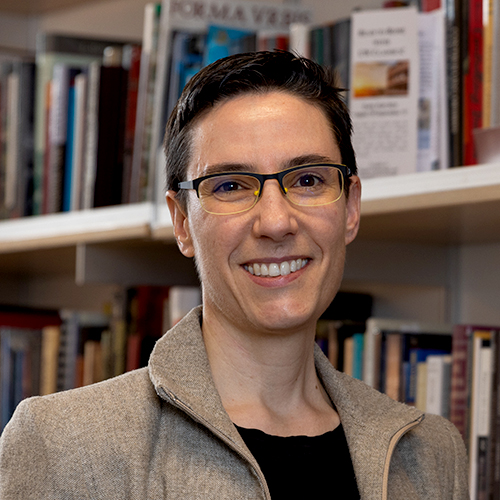Aleksandr Aravkin, associate professor of applied mathematics, could use a day off. Since March he and colleagues at the Institute for Health Metrics Evaluation (IHME) have been immersed in coronavirus research nonstop, providing mathematical modeling and scientific computing expertise to help countries around the world understand and forecast the trajectory of the COVID-19 pandemic.

Ka-Kit Tung, the Frederick and Julia Wan Endowed Professor of Applied Mathematics, has also been working to predict the trajectory of the pandemic, in a separate project unrelated to Aravkin’s work.
“As applied mathematicians, this is what we do,” says Tung. “We use our math tools to address problems that are happening in the world right now.”
Aravkin's Focus: Mathematical Modeling and Open Source Tools
Aravkin is director of Math Sciences at IHME, leading a team* whose mission is to solve problems in global health using open source tools that leverage math sciences. For the Covid-19 collaboration, Aravkin’s team is working with nine other research teams at IHME — at least 70 people from a range of fields — to develop the IHME Covid-19 model, available here, which forecasts infections, deaths, and equipment demand for all US states and many countries around the world.
The model has been cited repeatedly by local, state, and federal governments, and has been covered extensively by major news media. It was crucial in showing the importance of social distancing, and helped to predict peaks of deaths and hospitalization so that hospitals could plan ahead for the surge in demand for resources, including ICU beds and ventilators.

Aravkin’s team has developed methods and software to support the IHME model as it has evolved significantly throughout the epidemic. The initial IHME model used the CurveFit tool, available here. The latest model released May 4 additionally incorporates transmission dynamics, reflects planned changes to social distancing mandates, and can link the progression of the epidemic to key variables such as changes in mobility and testing per capita. “The new model is more reflective of what we are seeing as the pandemic evolves, and can help us make better decisions going forward,” says Aravkin.
In some ways, the mathematical challenges of this COVID-19 project are similar to others Aravkin has tackled, but the sense of urgency is like nothing he has experienced before. “The intensity of the project and the timescale have been completely different,” Aravkin says. “The thing that adds the most pressure is that people are looking at the model and using it to make decisions. It’s affecting the national conversation. We are continuously working to improve it.”
I believe that the ability to really have an impact on problems, and to see that impact, is making us stronger math researchers.
Having seen the impact of the models, Aravkin is proud of what the team and the IHME collaboration have accomplished. “There's a very large group of people working very hard, and the Math Sciences team’s role is to support that effort by solving problems and developing tools,” says Aravkin. “I believe that the ability to really have an impact on problems, and to see that impact, is making us stronger math researchers.”
For Tung, a Partnership with Chinese Colleagues
Tung was teaching an undergraduate course on mathematical modeling during winter quarter, and in particular on the topic of modeling the spread of infectious diseases, when he was asked by colleagues Norden Huang and Fangli Qiao in China to help model COVID-19. (Their project has no connection to IHME.) When Tung and his colleagues tested their model’s efficacy early on using COVID-19 data from China, their model predicted — with an accuracy of a few days — key events in the outbreak’s growth, spread, and decline throughout China two weeks in advance.
As data from the US and Europe became available, the team applied their model to those regions as well. The model is based on epidemiological concepts and relies on the real-time data on the number of newly diagnosed cases and the number of individuals who have recovered or died in a geographic region.

Tung notes that the UW Department of Applied Mathematics has a long history in mathematical modeling, starting with its first chair, Frederic Wan, who created the course on mathematical modeling that Tung now teaches. James Murray, who joined the department from Oxford University in the late 1980s and helped put the UW in the forefront of the field of mathematical biology, included an epidemiological model in his book Mathematical Biology, which Tung built on for his current model. Murray’s work similarly expanded on models that came before, back to what Tung describes as “the granddaddy of all models” for epidemics from 1927. “That 1927 model provided a core contribution to mathematical modeling of epidemics,” he says. “Some concepts from that model are still being used.”
Through COVID-19, Advancing the Field of Applied Mathematics
Tung and Aravkin’s current work will continue to advance the field of applied mathematics — a field that plays a role in so many areas, from health care to climate modeling to finance.
“In some fields, like physics, there are the known laws of nature,” says Tung. “If you want to calculate how the planets revolve around the sun, you can solve that equation and then you know the answer rather precisely. But in biology and the social sciences, we don’t have equations like that. It’s like a time before Newton came up with the laws of gravitation. There’s a need to come up with equations, and applied mathematics can help with that. There are many robust principles we can use to predict the future. Maybe someday it will become standardized, but right now we’re in a stage of discovery, which is exciting.”
As national, state, and local governments enter a new phase of decision-making related to COVID-19, leaders will continue to look to experts in the mathematical sciences for predictive information. Aravkin and Tung won’t be done with this work any time soon.
“The work is not just about prediction, but also what we have learned and discovered more generally about mathematical modeling of epidemics through the coronavirus,” says Tung. “While the models each of us are developing have had an impact on COVID-19 efforts, they also help advance the field of applied mathematics in different ways.”
. . .
*Aleksandr Aravkin’s Math Sciences team at IHME includes Dr. Peng Zheng, UW PhD students Marlena Bannick (Biostatistics), Jize Zhang (Applied Math), Alexey Sholokhov (Applied Math), Reed Sorensen (Health Metrics Sciences), and Dr. Bradley Bell.
More Stories

What the Sky Teaches Us
Brittany Kamai, an astrophysicist with knowledge of Pacific Islanders' Indigenous navigation using the sky, is teaching a new UW course, Pacific Indigenous Astrophysics.

Lifting Marginalized Voices — from Ancient Rome
"Interesting, frustrating, and necessary,” is how Sarah Levin-Richardson, professor of Classics, describes her research into the lives of enslaved individuals in the ancient world.

A Closer Look at Teens & Digital Technology
The impact of digital technology on teens' mental health is the focus of a new course developed by Lucia Magis-Weinberg in the UW Department of Psychology.